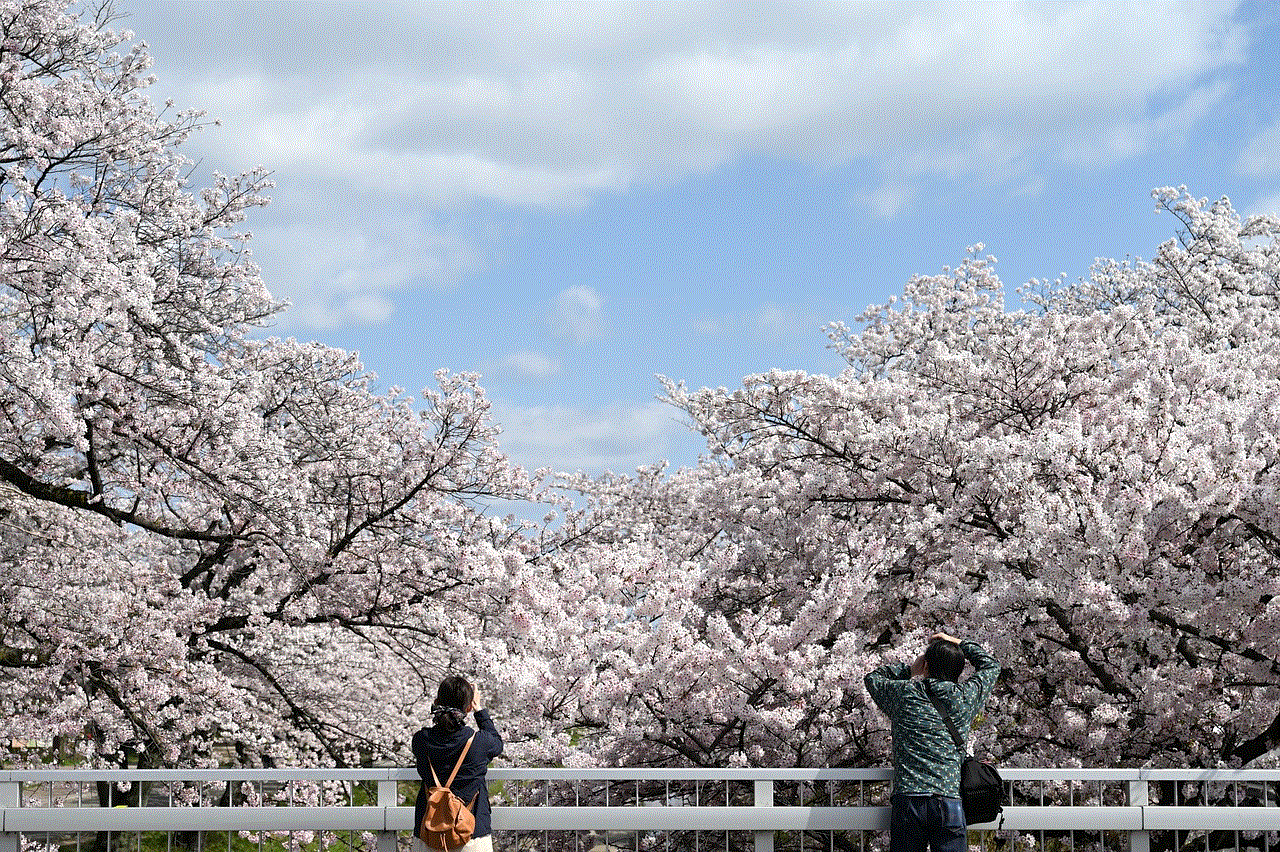how to add someone to restricted list
Adding someone to your restricted list on social media platforms can be a useful tool to manage your online connections and control the content they can see. Whether you want to limit the visibility of your posts or restrict certain individuals from accessing your personal information, the restricted list feature can provide you with the necessary control. In this article, we will guide you through the steps to add someone to the restricted list on popular social media platforms like Facebook, Instagram , and Twitter.
1. Facebook:
Facebook’s restricted list allows you to limit what specific individuals can see on your profile without unfriending or blocking them completely. Here’s how you can add someone to your restricted list on Facebook:
– Open Facebook and go to the profile of the person you want to add to the restricted list.
– Click on the “Friends” button located below their cover photo.
– From the drop-down menu, select “Add to another list” and then choose “Restricted.”
2. Instagram:
Instagram doesn’t have a direct restricted list feature like Facebook, but you can still achieve similar results by utilizing the “Close Friends” feature. Follow these steps to restrict someone on Instagram:
– Open the Instagram app on your mobile device.
– Go to your profile and tap on the three horizontal lines in the top-right corner.
– Select “Close Friends” from the menu and tap on “Add” to add people to your close friends list.
– Search for the person you want to add and tap on their username to include them in the list.
3. Twitter:
Twitter allows you to create private lists that can restrict someone’s access to your tweets without blocking them. Here’s how you can add someone to a restricted list on Twitter:
– Open Twitter and go to the profile of the person you want to add to the restricted list.
– Click on the three-dot icon next to the “Follow” button.
– From the drop-down menu, select “Add or remove from lists” and then choose the list you want to add them to or create a new list specifically for restricted users.
4. LinkedIn:
LinkedIn doesn’t have a restricted list feature, but you can adjust your privacy settings to limit what certain connections can see on your profile. Follow these steps to restrict someone on LinkedIn:
– Log in to your LinkedIn account and go to the profile of the person you want to restrict.
– Click on the “More” button below their profile picture and select “Report/Block” from the drop-down menu.
– In the new window that opens, select “Block or report” and then choose the appropriate reason for blocking.
– Once blocked, the person won’t be able to view your profile or interact with you on LinkedIn.
5. Snapchat :
Snapchat doesn’t offer a restricted list feature, but you can control who can view your snaps by adjusting your privacy settings. Here’s how you can restrict someone on Snapchat:
– Open Snapchat and swipe down to access the main menu.
– Tap on the gear icon in the top-right corner to access your settings.
– Under the “Who Can…” section, select “View My Story” and choose either “Friends Only” or a specific custom list of friends who can view your snaps.
– To add someone to your custom list, tap on “Custom” and select the users you want to include.
6. Pinterest:
While Pinterest doesn’t have a built-in restricted list feature, you can still control who can see your boards and pins by adjusting your privacy settings. Here’s how you can restrict someone on Pinterest:
– Open Pinterest and go to your profile by clicking on your username in the top-right corner.
– Click on the three-dot icon next to “Edit Profile” and select “Settings” from the drop-down menu.
– In the left-hand menu, click on “Privacy and data” and scroll down to the “Profile” section.
– Under “Who can see your Pins,” select “Only Me” to restrict access to your boards and pins.
7. YouTube:
Although YouTube doesn’t offer a restricted list feature, you can still control who can view your videos by adjusting your privacy settings. Here’s how you can restrict someone on YouTube:
– Open YouTube and go to your channel by clicking on your profile picture in the top-right corner.
– Click on “YouTube Studio” to access your channel settings.
– On the left-hand menu, click on “Settings” and then select “Privacy” from the drop-down menu.
– Under “Video privacy,” choose either “Private” to restrict access to specific users or “Unlisted” to share the video with a select group.
8. tiktok -parental-control-effectively-in-2023″>TikTok :
TikTok doesn’t have a restricted list feature, but you can still control who can see your content by adjusting your privacy settings. Here’s how you can restrict someone on TikTok:
– Open TikTok and go to your profile by tapping on the “Profile” icon in the bottom-right corner.
– Tap on the three-dot icon in the top-right corner to access your settings.
– From the menu, select “Privacy and Safety” and tap on “Who Can See Your Videos.”
– Choose either “Friends” to restrict access to your followers or “Only Me” to keep your videos private.
9. WhatsApp:
WhatsApp doesn’t have a restricted list feature, but you can control who can see your profile picture, status, and last seen information by adjusting your privacy settings. Here’s how you can restrict someone on WhatsApp:
– Open WhatsApp and go to the “Settings” by tapping on the three-dot icon in the top-right corner.
– Select “Account” and then tap on “Privacy.”
– From the privacy settings, you can choose who can see your “Last Seen,” “Profile Photo,” “About,” and “Status.”
10. Snapchat:
Snapchat allows you to control who can view your snaps by adjusting your privacy settings. Here’s how you can restrict someone on Snapchat:
– Open Snapchat and swipe down to access the main menu.
– Tap on the gear icon in the top-right corner to access your settings.



– Under the “Who Can…” section, select “View My Story” and choose either “Friends Only” or a specific custom list of friends who can view your snaps.
– To add someone to your custom list, tap on “Custom” and select the users you want to include.
In conclusion, adding someone to your restricted list on social media platforms can be an effective way to manage your online connections and control the content they can see. By following the steps outlined above, you can easily restrict specific individuals from accessing your personal information or limit their visibility of your posts. Remember to adjust your privacy settings on each platform according to your preferences and always review and update your lists as needed.
youtube safety mode iphone 20 8
YouTube is a popular video sharing platform that has revolutionized the way we consume and share content on the internet. With over 2 billion active users, it has become an integral part of our daily lives. However, with such a vast user base, there are bound to be concerns about the safety of its content, especially for younger viewers. In response to these concerns, YouTube has introduced a safety mode feature that allows users to filter out potentially inappropriate content. In this article, we will explore the YouTube safety mode for iPhone and how it works to protect young viewers.
What is YouTube Safety Mode?
YouTube safety mode is a feature that allows users to filter out potentially inappropriate or mature content on the platform. It was first introduced in 2010 and has undergone several updates and improvements over the years. When the safety mode is enabled, it helps to screen out videos that may contain violence, nudity, explicit language, or discussions about sensitive topics. This feature is particularly beneficial for parents who want to ensure that their children are not exposed to inappropriate content while browsing YouTube.
How to Enable YouTube Safety Mode on iPhone?
Enabling YouTube safety mode on an iPhone is a simple process. Follow the steps below to activate it:
1. Open the YouTube app on your iPhone.
2. Tap on the profile icon at the top right corner of the screen.
3. Select “Settings” from the drop-down menu.
4. Under the “General” section, tap on “Restricted Mode Filtering.”
5. Toggle the switch next to “Restricted Mode” to enable it.
6. You will be prompted to enter your YouTube account password to confirm the change.
7. Once confirmed, the safety mode will be enabled, and you will see a message confirming it.
8. You can also lock the safety mode by tapping on “Lock Restricted Mode on This Browser.”
9. This will prevent anyone from disabling the safety mode without the password.



10. To disable the safety mode, follow the same steps and toggle the switch next to “Restricted Mode” to turn it off.
How Does YouTube Safety Mode Work?
YouTube safety mode works by using a combination of automated filters and human review to screen out potentially inappropriate content. The automated filters use signals such as keywords, metadata, and community flagging to identify videos that may contain sensitive or mature content. These videos are then reviewed by human moderators to determine if they are suitable for the safety mode. This process helps to ensure that the safety mode is not overly restrictive and does not block out content that may be appropriate for some viewers.
It is important to note that the safety mode is not 100% accurate and may not catch all inappropriate content. It is always advisable for parents to monitor their children’s online activities and have open discussions about internet safety.
Benefits of YouTube Safety Mode for iPhone Users
The YouTube safety mode for iPhone offers several benefits for users, especially for parents and young viewers. Some of these benefits include:
1. Protecting Young Viewers: The safety mode helps to protect young viewers from being exposed to inappropriate content. This is particularly important as children are more vulnerable and can easily stumble upon videos that may not be suitable for their age.
2. Peace of Mind for Parents: With the safety mode enabled, parents can have peace of mind knowing that their children are not viewing content that they deem inappropriate. This feature allows parents to have control over what their children can access on YouTube.
3. Customization Options: The safety mode offers users the option to customize the level of filtering they want. This allows for a more tailored experience based on the age and maturity level of the viewer.
4. Safe Browsing for All: The safety mode is not only beneficial for young viewers but also for other users who may not want to be exposed to certain types of content. It allows for a safer and more comfortable browsing experience for all.
5. Prevents Accidental Exposure: With the safety mode enabled, users are less likely to accidentally stumble upon inappropriate content. This is particularly important for young viewers who may not have the understanding to navigate the internet safely.
Drawbacks of YouTube Safety Mode
While the YouTube safety mode offers many benefits, there are also some drawbacks to consider. These include:
1. Not 100% Accurate: As mentioned earlier, the safety mode is not 100% accurate and may not catch all inappropriate content. This means that some videos that may not be suitable for young viewers can still slip through the filters.
2. Can Be Bypassed: The safety mode can be bypassed by anyone who knows the YouTube account password. This means that if a child has access to the password, they can easily disable the safety mode.
3. Overly Restrictive: In some cases, the safety mode may be overly restrictive and may block out content that may be appropriate for some viewers. This can be frustrating for users who want to access certain videos but are unable to do so because of the safety mode.
4. Limited Protection: The safety mode only applies to YouTube and does not extend to other websites or apps that may contain inappropriate content. This means that young viewers are still at risk of being exposed to inappropriate content outside of the YouTube platform.



Conclusion
The YouTube safety mode for iPhone is a useful feature that offers an additional layer of protection for young viewers on the platform. It helps to filter out potentially inappropriate content and gives parents peace of mind knowing that their children are not accessing content that may not be suitable for their age. However, it is important to note that the safety mode is not a substitute for parental supervision and should be used in conjunction with other safety measures. With the ever-increasing amount of content being uploaded to YouTube, it is crucial to have open and honest discussions about internet safety with children to ensure a safe online experience for all.

